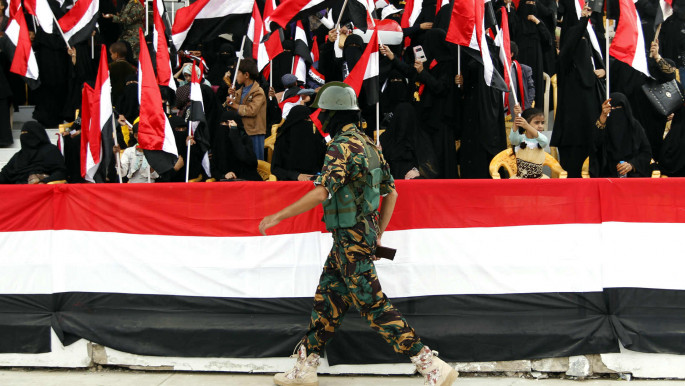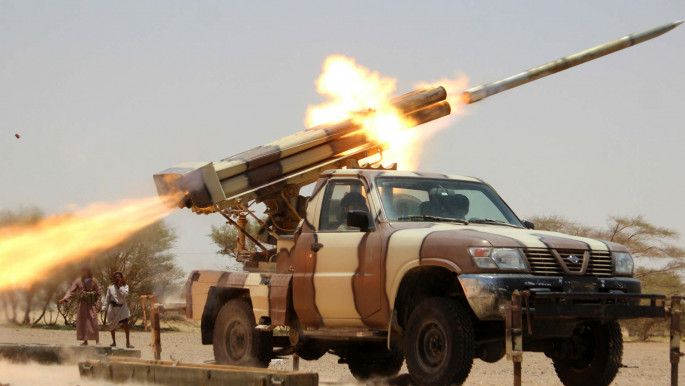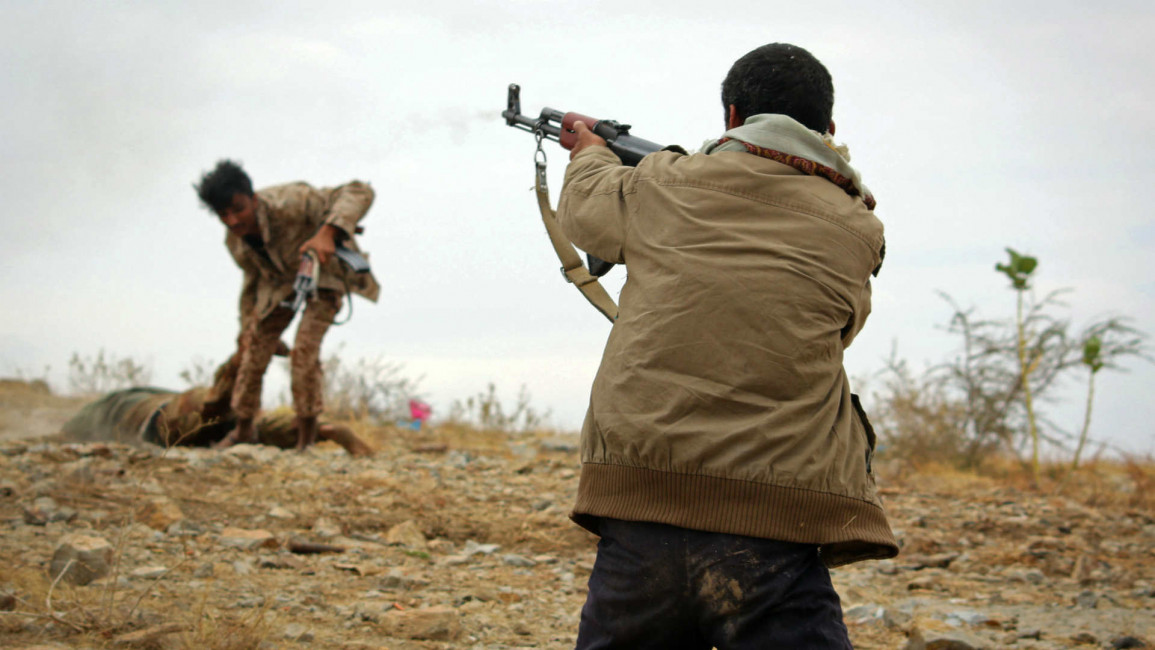
Exposed: France's arms dealers making a killing in Yemen
On 26 March 2015, Saudi Arabia and 10 other countries launched a campaign of airstrikes in Yemen against the Houthi rebels. Abdel Malek al-Houthi and his followers, by adopting an alliance with their former adversary, ex-president Ali Abdullah Saleh, had forced transitional President Abedrabbo Mansour Hadi to flee the capital, and eventually, the country.
At the beginning of the Saudi offensive, the Houthis occupied Sanaa, the capital, and Aden, the largest city in the south. Hadi had called for help and Saudi Arabia and its allies claimed they wanted to return him to power and counter Iranian influence.
The UN Security Council endorsed their initiative and France, the United Kingdom and the United States began supplying the weapons.
The US and UK are frequently accused of war-crime complicity due to their arms deliveries to Saudi Arabia, and other nations.
France, however, is usually spared such accusations, despite a long-standing partnership with the Saudi kingdom and several of its allies. As of around 2010, Paris turned to more Gulf countries to boost its arms exports.
 |
These weapons are easily adapted to conditions in Yemen as they were built to the requirements of wealthy Middle East countries either at war or affected by chronic instability |  |
French authorities opened a military base in Abu Dhabi for equipment demonstrations, at the risk of compromising the country's political independence for the sake of arms sales.
In 2016, some 50 percent of the orders placed with the French industry came from the Middle East. The Saudi monarchy remains its number one client, having purchased nearly nine billion euros ($10.8bn) of weaponry between 2010 and 2016, representing some 15 to 20 percent of France's annual arms exports.
These weapons are easily adapted to conditions in Yemen as they were built to the requirements of wealthy Middle East countries either at war or affected by chronic instability. According to previously undisclosed data supplied by the French board, l'Observatoire des Armements, France and Saudi Arabia made covert use of a contract meant for Lebanon to prepare for war in Yemen.
A lucrative market
The coalition's bombings - including many "blunders" that critics say are tantamount to war crimes, and that Saudi Arabia has so far managed to keep the UN from investigating - are thought to have killed 10,000 civilians, according to data collected since January 2017 (the exact figure remains unknown).
The UN and several NGOs report famine, a cholera epidemic and thousands of wounded and displaced persons. A "catastrophe entirely due to human intervention" as the latest report from the office of the UN High Commissioner for Human Rights reminds us. And this is not to mention the partial destruction of the ancient city of Sanaa, a UN World Heritage Site, and the bolstering of Al-Qaeda in the Arabian Peninsula (AQAP):
"AQAP is more powerful than ever. While ISIS makes the headlines... Al-Qaeda is a model of success." In particular, "it has managed to exploit a flourishing war economy", writes April Longley Alley.
Read more: What fuels al-Qaeda's survival in Yemen's south?
Saudi Arabia has flooded Yemen with Steyr AUG assault rifles and some have found their way into the hands of AQAP. One of the Charlie Hebdo killers claimed to belong to that organisation, which raises the issue of the diversion of weapons from "legitimate" users to terrorist groups.
 |
|
| Houthi supporters rally in Sanaa 2016 [Getty] |
And yet, the Arms Trade Treaty (ATT), ratified by France on 2 April 2014, prohibits the export of weapons liable to be used in violation of international human rights law.
Now not only did France go on with its sales of weapons to the belligerents after March 2015, it stepped them up: Rafale fighter planes to Egypt, a Mistral helicopter landing dock and a multipurpose frigate FREMM to Egypt, Sherpa Light armoured vehicles built by Renault, and Caracal helicopters built by Airbus Industries to Kuwait.
As a creditor of some of these countries, Saudi Arabia has the means to draw them into war and the weapons sold to its allies can be lent to it or serve its military objectives.
"In 2015, France granted Saudi Arabia alone licenses amounting to 900 million euros [$1.1bn] for military goods delivered that same year. At no time has the government indicated over the past two years that it had rejected, canceled or suspended any export licenses," reported Amnesty International.
 |
The readiness displayed by French arms manufacturers to comply with Saudi requests is a reflection of the close ties between the two countries |  |
Saudi Arabia: a pampered customer
The readiness displayed by French arms manufacturers to comply with Saudi requests is a reflection of the close ties between the two countries which go back many years. While it is extremely difficult to obtain precise information on this very secretive subject, some sources are available.
From the very beginning of the war in Yemen, the French army "flew reconnaissance missions over Houthi positions for the benefit of the Saudi client and kept on training its fighter pilots", reported MS&T Magazine.
France also supplied Thales Damocles XF laser designation pods to be placed under the Saudi fighter bombers - which appear not to prevent "blunders"; three months after the war began, an Airbus 330-200 MRTT flying tanker was delivered to Saudi Arabia.
This was the last of a fleet of six; in April 2017, two of these aircraft were deployed over Yemen where they are indispensable to the ongoing war, providing in-flight refueling for Saudi F15s.
Caesar 155mm cannons, built by the French firm Nexter, as well as Cougar troop transport helicopters from the European group EADS and SDTI military espionage drones from the French firm Sagem have also been transferred since the start of the conflict.
In 2016, France delivered 276 light armoured vehicles, according to its own official July 2017 report to the secretariat of the ATT. The package was largely made up of Sherpa Light vehicles from Renault and Vab Mark 3 personnel carriers from Renault Trucks Defense.
All of these were originally meant for Lebanon.
Earlier, in February 2016, with Riyadh's bombing campaign already failing, the coalition began to rely on local militias equipped with light Nimr vehicles supplied by the United Arab Emirates (UAE) in their attempt to oust Houthi forces, reported Michael Knights and Alexandre Mello of the Washington Institute. The arrival of the French armoured vehicles, which easily weave through the narrow streets of Arab towns, tied in perfectly with this counter-insurrectionist strategy on the ground.
The Sherpa Lights are meanwhile equipped with the latest detection devices which provide protection against homemade explosives; moreover, the coalition also uses small patrol boats in support of their warships blockading the country.
 |
|
|
Yemeni fighters loyal to the Saudi-backed Yemeni president |
While the French company Couach has blocked at berth two rapid patrol boats meant for export to Yemen on account of the embargo, it began delivery of its high-speed interceptors to Saudi Arabia in August 2016.
And, according to Ouest France, 39 new craft of this type are under construction for Riyadh. In December 2016 the contract was being finalised; to ensure the blockade - now starving the whole of Yemen's population - uses Baynunah class corvettes supplied by the UAE, as Naday Pollak and Michael Knights point out.
When the Saudi kingdom's fleet withdrew for maintenance in March 2016, the French navy stepped in to ensure the continuity of the blockade, as La Lettre de l’Océan Indien explained at the time. Besides, the coalition naval forces are equipped with electronic navigational systems sold by Safran, another French arms manufacturer, among them instruments essential for missile logistics.
Finally, 745 long-range sniper rifles were supplied to Riyadh in 2015 - and another 500 were sent in 2016 - according to these years' reports from the ATT secretariat.
Arms for Lebanon turn up in Yemen
Some of these weapons were originally meant for the Lebanese army. Signed at the end of 2014 for a total of three billion euros ($3.6bn), the Donas contract provided for the delivery to the Lebanese armed forces of French military equipment. Saudi Arabia footed 2.2 billion euros ($2.6bn) of the bill.
The reasons given for this transfer? The fight against the Islamic State group and the war in Syria. Industrialists had been working on this contract since 2011, and the first delivery was made in April 2015 - but was soon called into question because of the Saudis' conflict with a French go-between, the ODAS company.
Six months after the contract was formalised, Saudi Arabia launched its offensive in Yemen. Arms industrialists contacted by l’Observatoire des armements reportedly wondered about the timing: was the Donas contract drawn up in anticipation of the Yemen war?
 |
That was when the penny dropped. We were working on equipment that was meant to serve in Yemen |  |
In order for their material to be adapted to the conditions laid down by the purchasing country, arms manufacturers must respect NATO agreements.
"In 2015 we began testing the material planned for Donas. To our surprise we had to adapt the material to conditions which did not tally with those that prevail in Lebanon," l'Observatoire reported an anonymous informant as saying. "That was when the penny dropped. We were working on equipment that was meant to serve in Yemen."
According to this source, by April 2017, "80 percent of the weaponry meant for Beirut was actually the object of a firm order from Saudi Arabia for its own troops, and 95 percent had already been deployed in the field, for testing purposes or permanently".
According to the general press this contract was renamed the Saudi-French Military Contract (SFMC) in 2015, and Saudi Arabia became sole consignee, but according to the intelligence press the original contract remains intact. By creating confusion around the Donas contract over the delivery of these weapons and their final destination, France blurred its responsibilities and diverted attention from the problematic usage to which they were being put.
France also equipped the other belligerents in this conflict - Egypt, the United Arab Emirates, Kuwait and Qatar [Qatar withdrew its troops at the start of the recent Gulf diplomatic crisis]. Among the material used in Yemen are Leclerc tanks from the UAE - on the news channel LCI, high-ranking French officers bragged about the unprecedented results of French equipment in Yemen - as well as Mirage 2000s from the UAE and Qatar, for which France provided maintenance, updating and munitions.
These fighter planes are used as bombers, the Emirates' flight personnel having complained about their limited ammunition storage capacity.
Moreover, when selling aircaft such as the Mirage or the Rafale, or the Leclerc tank, France commits itself to a period of maintenance which may last anywhere from fifteen to twenty-five years. It is therefore tied for all that time to the policies of the client state.
Business as usual while war rages
Just one year after the beginning of the conflict, launched by a thirty-one-year-old crown prince, Mohammad Bin Salman (son of King Salman), seeking to gain legitimacy after his appointment as minister of defence, it was already doomed to failure.
The battle lines have scarcely moved, pockets of resistance have formed and the coalition has responded with a strategy of counter-insurrection relying on local militias equipped with Nimr transport vehicles once provided by the UAE.
At the same time, the Saudi economy and its own citizens are suffering.
 |
|
|
Saudi allied Yemeni tribes launch rockets |
Meanwhile, Amnesty International and Human Rights Watch have denounced the coalition's "war crimes".
In February 2016, as the result of a campaign by The European Network Against Arms Trade (ENAAT) - of which the Observatoire des armements is a member - and by the British NGO Saferworld, the European Parliament passed a resolution demanding an EU embargo on the sale of arms to Saudi Arabia.
In spite of pressure exerted by Manuel Valls' government in Paris, the socialist MPs voted in favour of the text. But France has not revised its policies - and on 4 March 2016, François Hollande went as far as to secretly award the Légion d'Honneur to Crown Prince Muhammad bin Nayef - who was ousted as heir to the Saudi throne by bin Salman earlier this year.
French support for Saudi operations is thus military, logistic and political, which explains the silence of its diplomats. Its complicity with the crimes perpetrated in Yemen is still not at issue. French MPs remain indifferent. No parliamentary investigation committee has been formed, despite the fact that NGOs and other associations are demanding that the French call an immediate halt to their transactions with the belligerents and set up parliamentary oversight on arms sales.
On 16 December 2015, nine months after the offensive began, arms manufacturers taking part in a Sorbonne colloquium on "The defence industries faced with international challenges" congratulated themselves on their record sales.
Pascale Sourisse, general director in charge of international development for Thales, whose chief customer is the French Defence Ministry, was delighted at a robust market "which is certainly not shrinking". He spoke of "an exceptional year". Similar satisfaction was expressed during Eurosatory, an international defence and security exhibition held in Paris in 2016, at which Emmanuel Macron paid a visit to the Thales stand.
Etienne de Durand, delegate in charge of defence policy and foresight for the Directorate General of International Relations and Strategy (DGRIS) at the Defence Ministry told the Sorbonne attendees: "Selling arms isn't like selling shoes."
And to top it all, at a meeting in the Saudi embassy, on March 22, when a dozen French journalists, including partners from Orient XXI, met with Saudi generals and other representatives of the kingdom, all hinted that they hadn't the slightest idea how the war was going to end, nor what kind of strategy could resolve the current stalemate.
Contacted by OrientXXI, the French Foreign Ministry would answer none of our questions.
Warda Mohamed is a journalist and editor of Orient XXI. She also works with other publications such as Le Monde Diplomatique, and is based in Paris.
Tony Fortin is a researcher specialising in French arms sales. He is also the head of l'Observatoire des Armements.
Opinions expressed in this article remain those of the author and do not necessarily represent those of The New Arab, its editorial board or staff.



